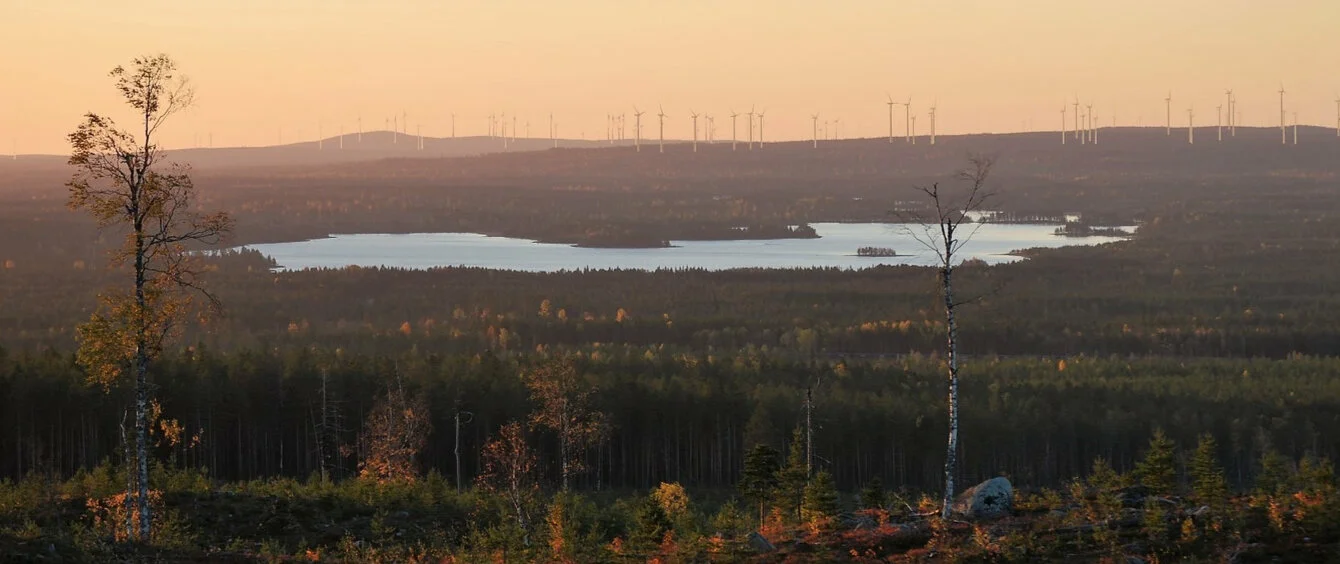A surface area larger than Frankfurt am Main, covered with millions of young fir trees – Europe’s largest onshore wind farm, Markbygden Ett (‘Ett’ is Swedish for one), is being built in this remote but idyllic corner of northern Sweden, and a network of gravel roads longer than the distance from London to Paris will soon connect the planned 179 wind turbines dotted across the forested area.
Given its dimensions, authors from Bloomberg, the US business news agency, decided to take a closer look at the project. In a detailed report, which has since been published on renewableenergyworld.com among other sites, they shed some light on investment conditions, potential customers for the generated electricity, and what effects it will have on electricity supply. The journalists claim that Markbygden is an example of how wind farms are becoming increasingly less dependent on subsidies and are, instead, being backed by market mechanisms.
179 turbines with a total output of 650 MW
With the help of its soon-to-be 179 turbines and boasting a capacity of 650 megawatts, the wind farm is expected to generate enough electricity to replace the two reactors at a nuclear power plant in southern Sweden, which are scheduled to be decommissioned later this year, says the report. But Markbygden is not only important for Sweden’s electricity supply. The wind turbines will ensure that the country generates more electricity than it consumes. Despite reducing its nuclear power capacity, Sweden is expected to be able to continue exporting electricity to other European countries.
According to the article, the wind farm in northern Sweden has caught the attention of a wide range of investors from the energy and financial sectors, attracting investments of more than six billion euros from corporate coffers. Under a long-term power purchase agreement, a portion of the electricity generated will be sold directly to aluminium producer Norsk Hydro ASA. According to the article, this deal was the largest of its kind when the contract was signed.
Markbygden is only one of several large wind power projects in Sweden. According to the report, wind power generation in Scandinavia’s largest economy is expected to double within the next three years.
Comparisons with trailblazing Texas
The Bloomberg authors compare the expansion of wind power in northern Sweden with the wind power boom in Texas, which, in recent decades, helped elevate the Lone Star State to become the largest wind energy producer in the US.
And the similarities between Texas and Sweden are clear. Both Texas plains and Swedish forests offer large swathes of land with favourable conditions for wind energy. In addition, the land in both regions is usually owned by only a few large landowners, which makes it much easier to acquire the necessary space for energy projects. In addition, energy companies prefer Sweden to other European countries such as Germany, for example, because it is easier to obtain permits for large wind farms, according to the article
Expansion necessary to achieve climate targets
The authors say the project in northern Sweden also shows that large-scale renewable energy systems are necessary to hit climate targets. In Sweden alone, onshore capacities would have to triple in the next 20 years in order to achieve the government’s goal of using renewable energy to cover the country’s entire electricity supply.
Photo Credit: svevind.se
